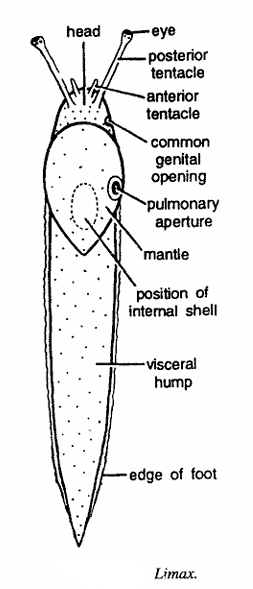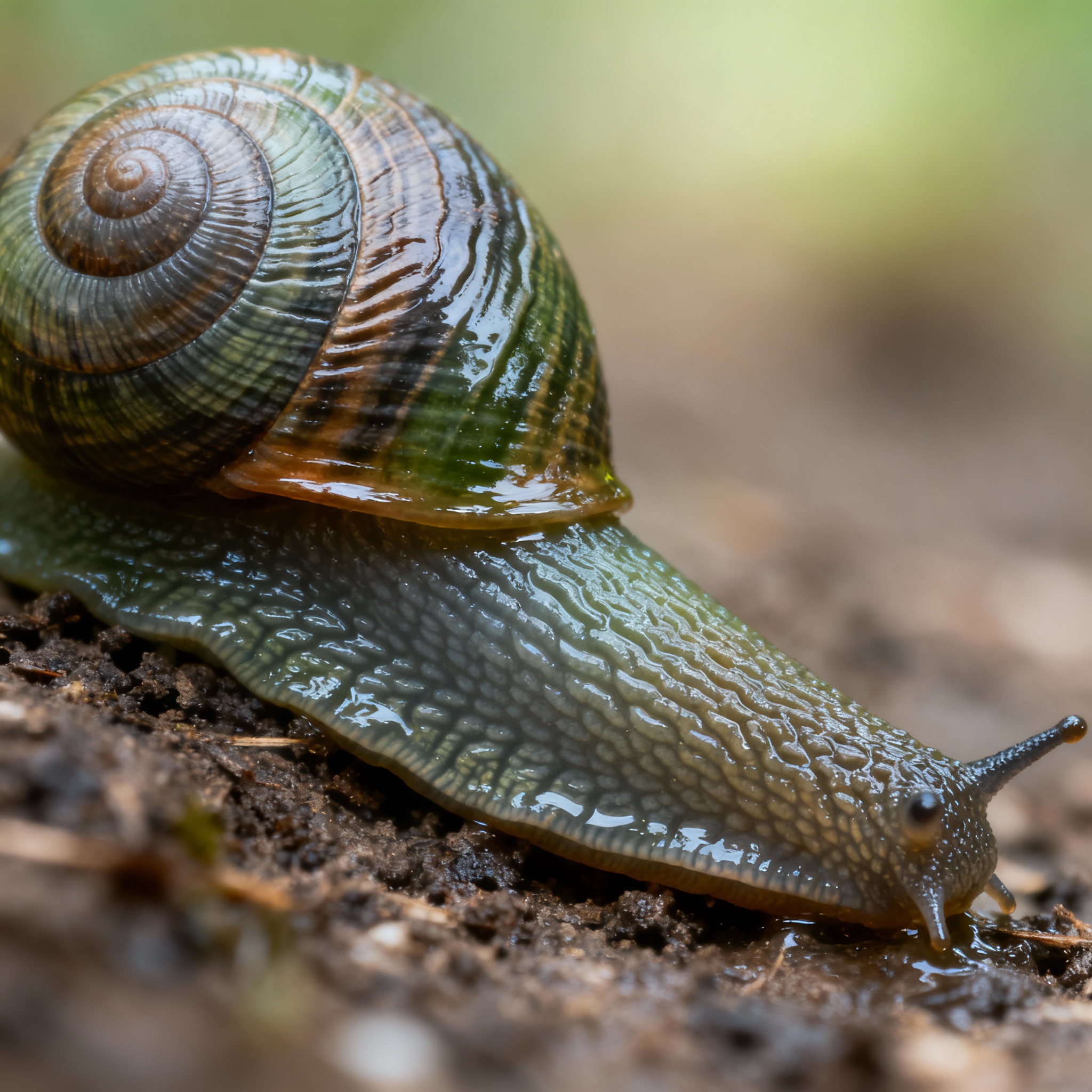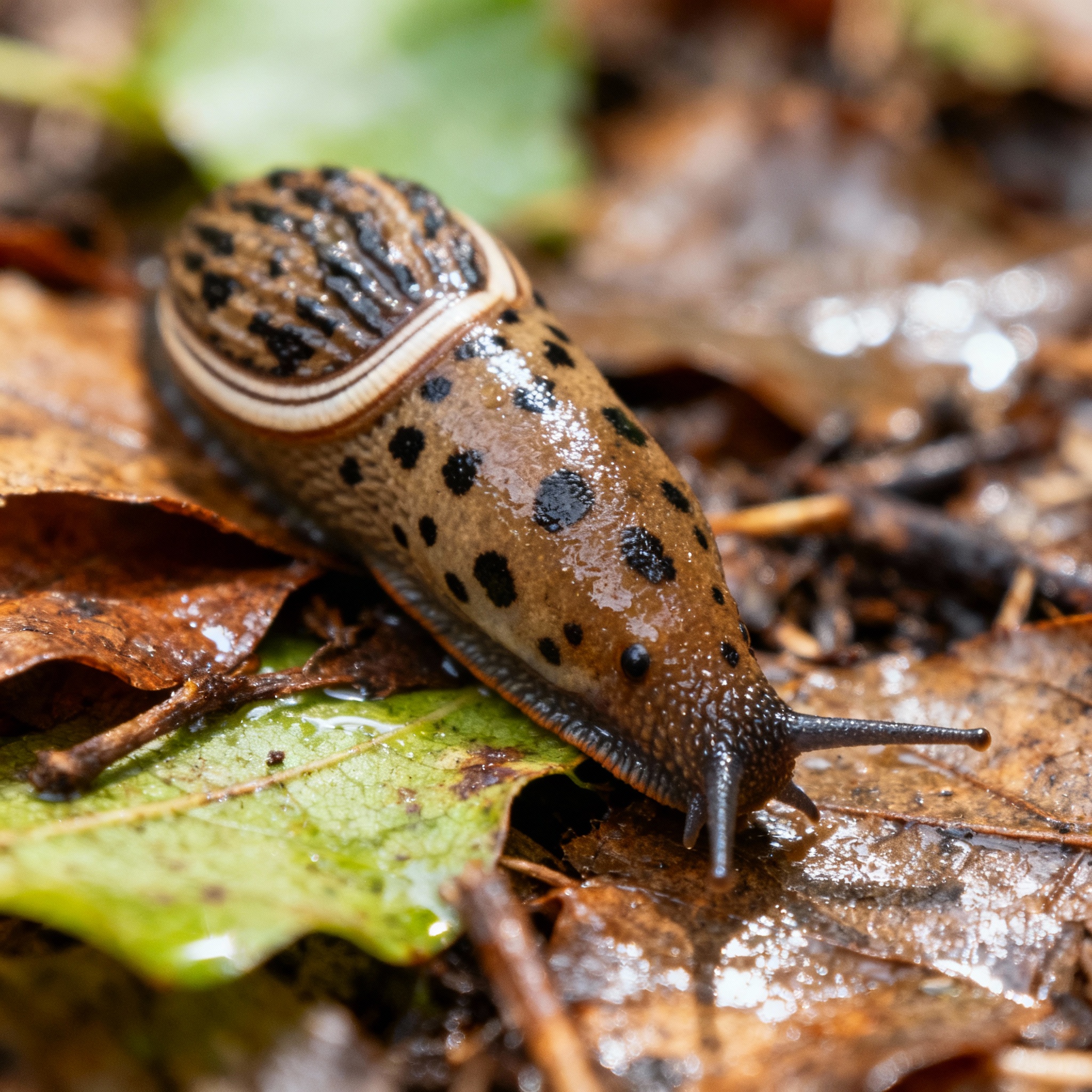Limax: Classification, Habitat, Anatomy, Ecology, and Identification
Limax is a genus of large, air-breathing terrestrial slugs in the family Limacidae, best known for its most prominent species, Limax maximus, commonly called the leopard slug or great grey slug. Unlike most land mollusks, Limax species are shell-less as adults, instead possessing a small internal shell plate. The genus name comes from Latin for “slug” and includes over 30 recognized species native mostly to Europe, with several being distinguished by remarkable size, coloration, and sometimes peculiar mating rituals. These slugs play important roles as decomposers, bioindicators, and components in the garden ecosystem, where their presence can help regulate populations of decaying organic matter and, sometimes, other slugs and snails.
Classification of Limax
| Rank | Taxon | Characteristic |
|---|---|---|
| Domain | Eukaryota | Organisms with membrane-bound nuclei and organelles |
| Kingdom | Animalia | Multicellular, heterotrophic organisms |
| Phylum | Mollusca | Soft-bodied organisms, mostly with a shell |
| Class | Gastropoda | Muscular foot, head with tentacles, torsion in development |
| Order | Stylommatophora | Terrestrial snails/slugs with eyes at tentacle tips |
| Family | Limacidae | Terrestrial slugs, long keel, mantle with concentric rings |
| Genus | Limax | Large shell-less land slugs, small internal shell plate |

Habit and Habitat
These slugs predominantly inhabit moist, shaded terrestrial environments throughout Europe, extending into temperate parts of Asia and, by introduction, North America and other regions. They favor woodlands, gardens, parks, cellars, compost piles, and areas rich in leaf litter or rotting wood. The microclimate is key, with most species preferring damp locations buffered from extreme temperature fluctuations. Many species have nocturnal activity patterns, emerging at night or after rain to feed and mate, while retreating under cover during dry or sunny spells.
Geographical Distribution
The genus has its main diversity center in the Mediterranean, European Alps, and the Balkans. Limax maximus is widespread in Europe and has been introduced to North America, South Africa, Australia, and New Zealand, where it has become established in urban and garden habitats. L. seticus—recently described from Nepal—represents the genus at high elevations in Asia. Dispersal often occurs through the horticultural trade and movement of soil or plants.

General Characteristics
- Body is elongated and differentiated into head, foot and visceral hump.
- Colour may be yellowish or brownish or greyish.
- Head contains mouth, a pair of lateral lips, a pair of retractile anterior tactile tentacles, a pair of long posterior retractile tentacles, each having a black eye at its tip and a genital pore.
- Eyes are placed at the tips of the posterior of the two pairs of tentacles.
- The tentacles cannot be invaginated within the head.
- Foot is blunt anteriorly and pointed posteriorly and is provided with grooves.
- It is divided into lateral and median strips. Visceral hump is elongated and flattened and pointed posteriorly.
- Mantle does not extend back behind the middle of the body.
- External shell and ctenidium are absent.
- A rudimentary shell in the form of a thin calcareous plate hidden in the mantle. Hermaphroditic
- Body and Mantle: Limax species are large (10–20 cm in some adults), with an elongated body dominated by a prominent mantle featuring a pattern of concentric rings. The mantle comprises roughly the front third of the body.
- Keel: A distinct but short dorsal keel runs towards the tail, aiding identification and locomotion.
- Coloration: The body varies from gray to brown, often spotted or streaked with black, especially in leopard slug (L. maximus). Color varieties are numerous; the sole of the foot is usually uniform in color.
- Tentacles: Very long and slender, serving as sensory organs with eyes at their tips.
- Respiratory System: The pneumostome (respiratory pore) is visible on the right side behind the mid-point of the mantle.
- Shell Plate: Instead of a true shell, Limax has a small, thin, internal shell plate within the mantle cavity.
- Mucus: Colorless, iridescent, and less adhesive than in some other slug families.
Special Features
- Unusual Mating Rituals: L. maximus is renowned for its suspended mating—two slugs hang entwined from a thread of mucus in midair, a striking behavior unique to this genus.
- Beneficial Species: Leopard slugs can be beneficial in gardens, helping to consume decaying organic matter and even predating on smaller pest slugs.
- Variety Richness: Numerous color and pattern varieties have been described; these hold no taxonomic significance but illustrate the genus’ diversity.
- Invasiveness: Limax maximus especially has proven highly adaptable, thriving in new areas and becoming naturalized far beyond its native range.
- Bioindicator Role: Sensitive to environmental changes, Limax species can be indicators of habitat moisture and pollution levels.

Identification
Differentiating Limax and its species involves:
- Size and Body Shape: Large (10–20 cm extended), elongated slugs with distinctive keel and mantle covering over a third of body length.
- Mantle Rings: Concentric rings on the mantle, centered on the mid-line.
- Keel: Running gently down the tail, not extending to mantle as in some related genera.
- Spotting/Banding: Leopard-like spotting (especially in L. maximus), variable between individuals and localities.
- Foot Sole: Uniform ash or yellowish-ash color, never brightly colored or banded.
- Tentacles: Prominently long, slender; often uniformly colored.
Dissection is often required to distinguish Limax species from close relatives (Limacus, Lehmannia, or Deroceras)—internal shell plate and characteristic genital structures are important.
References
- https://en.wikipedia.org/wiki/Limax
- https://en.wikipedia.org/wiki/Limax_maximus
- https://www.sciencedirect.com/topics/agricultural-and-biological-sciences/limax
- https://www.foliamalacologica.com/-Limax-Limax-seticus-n-sp-from-high-mountains-in-Nepal-Gastropoda-Pulmonata-Limacidae,125279,0,2.html
- https://www.molluscs.at/gastropoda/terrestrial/limax.html
- https://lanwebs.lander.edu/faculty/rsfox/invertebrates/limax.html
- https://conchsoc.org/aids_to_id/slug4B.php
- https://www.cabidigitallibrary.org/doi/full/10.1079/cabicompendium.30825
- https://agsci.oregonstate.edu/nurspest/slugs/slug-taxonomy
- https://www.sciencedirect.com/topics/agricultural-and-biological-sciences/limax-maximus
